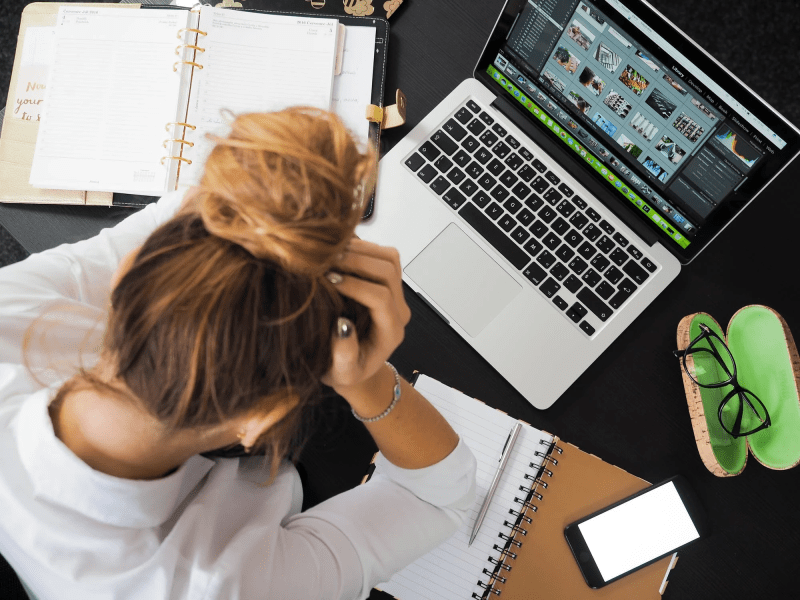Safety first. Shelter in place, quarantines and home “lockdowns” have been the new reality in California since April in a global effort to keep death rates low and minimize spread of the deadly, novel coronavirus. This prevailing prioritization of health has kept almost all Americans, except for essential workers, stuck at home working and attending school remotely. The new reality has resulted in dramatically increased screen time, creating not only mental but also visual fatigue. Before the pandemic, Americans were already likely overexposed to abundant screen light, but with all classes and meetings now moving online, what is happening to the safety of our eyes and vision health?
Nielsen reports indicate media consumption has increased 60% for Americans during shelter-in-place. Given already high screen hours, this increase is significant. Screen time estimates have increased to 13:28 hours per day compared to the 10:09 hours per day this time last year. For school-aged children, the stats are also similar: screen usage is up by over 50%. With the sudden surge of screen use, it’s not surprising that we are beginning to see physical effects. The Vision Council reports that some of the effects of screen time on children include headaches (8.8%), neck/shoulder pain (5%), eye strain/dry or irritated eyes (9.1%), reduced attention span (15.2%), poor behavior (13.3%) and irritability (13.5%). In order to curb some of the damage, some have been using blue light blockers, such as glasses with tinted lenses that help limit exposure to blue light.
Blue light concerns began because of the wavelength’s similarity to UV light on the electromagnetic spectrum. While the anterior structures of our eyes block and absorb most UV rays from reaching the retina, visible blue light can pass through the cornea and impact our light-sensitive tissue. Contrary to popular belief, blue light doesn’t cause eye diseases. According to the American Academy of Ophthalmology, the amount of blue light emitted from our devices is too small to do any actual damage. Judith Nevitt, the deputy chief of ophthalmology at Stanford University School of Medicine, says “the problems people complain [about] are simply caused by overuse of digital devices; it’s how we use our digital devices, not the blue light that comes out of them.”
Nevitt further explains that blue light glasses may benefit those with glare or contrast sensitivity, but the glasses are actually more of a placebo. However, blue light glasses may help with sleep. According to Nevitt, “If you have a lot of blue light [exposure] right before going to sleep, it might be harder to fall asleep. The blue light from these devices holds back the body’s production of a sleep inducing compound called melatonin, [so] by using those glasses, you can range your melatonin levels and therefore go to sleep better.” The effects of blue light glasses are largely based on personal preference, so the effectiveness varies upon person.
Aside from eye strain, conjunctivitis is also something to look out for. Eye irritation or pink eye could be potential symptoms of Coronavirus, even if the person appears to be asymptomatic otherwise. “Mucus membrane surfaces in your body can transmit bacteria, can transmit viruses, so [the conjunctiva] is a point of entry,” Nevitt explains. Several ways to prevent eye transmission include wearing glasses or sunglasses, similar to how we currently wear masks over our mouths. Additionally, when touching outside surfaces, Nevitt stresses the importance of not touching your eyes. This idea also overlaps with wearing less makeup while in quarantine, one less reason to touch the eyes. Creamy cosmetics specifically are worse than pencil or powder, as creams can act as a bacteria carrier.
It’s challenging to escape the increase in blue light exposure since the American Optometric Association reported that 63% of US employees are now working from home, an increase of 31% compared to mid-March. However, because blue light is not actually causing any eye strain, it’s important to focus on the things that are, such as poor posture, forgetting to rest your eyes and how you use your devices. Nevitt encourages people to moderate their screen time, as well as to try out the 20-20-20 rule.
“We always talk about 20/20 vision, so that means every 20 minutes, take a 20 second break, and relax your eyes by looking 20 feet away or further,” Dr. Nevitt said.
She also emphasizes that you should intermittently rotate your shoulders back and down in order to straighten your spine as well making sure screens are at least 14 inches away from your eyes. Dr. Nevitt also cautioned that people often tend to forget to blink when staring at screens for prolonged time periods which can lead to dry eyes. Dr. Nevitt recommends using eye moisture droplets to treat this condition.
While staying home remains a top priority for reducing the spread of coronavirus, you should not forget the importance of physical self-care. In order to adapt to our new reality, we need to learn how to maintain a healthy lifestyle, including being mindful of eye health. If you feel any signs of eye strain, dry eyes, headaches or neck and shoulder pain, be sure to remember these tips from Dr. Nevitt. Remember, your eyes are a reflection of your spirit during these challenging times!
Contact Kelly Yang at kellyyang1 ‘at’ gmail.com.
